Israeli-Iranian Flick Depicts Regime’s Ban On Competing With Israelis

A movie about the Islamic Republic’s pressures on Iranian athletes not to face Israeli competitors is the first production co-directed by Iranian and Israeli filmmakers.

A movie about the Islamic Republic’s pressures on Iranian athletes not to face Israeli competitors is the first production co-directed by Iranian and Israeli filmmakers.
The film, which premiered at the Venice Film Festival, had to be shot in secret to prevent possible interference by Tehran, directors Zar Amir Ebrahimi and Guy Nattiv told Reuters on Sunday.
"Tatami", a tense thriller centered on a world judo championship, received a standing ovation during its premier at the weekend. The film takes place over the course of the single day of competition as an Iranian judoka champion, played by Farsi-speaking US actress Arienne Mandi, is ordered to fake an injury to avoid a possible match-up with an Israeli competitor, a scenario that has happened to several Iranian athletes in real life.
Amir Ebrahimi and Nattiv shot the movie in Georgia, a country Iranians can easily visit. They stayed in separate hotels, spoke English and did not let on that they were making such a politically charged film.
"I knew there are many Iranians there, so we were trying to keep it calm and secret," said Amir Ebrahimi, who is an award-winning actress who fled Iran in 2008.
Iran does not recognize Israel's right to exist and has forced athletes into intentionally losing matches, forfeiting games, or claiming injuries to evade encounters with Israeli competitors.
banned its athletes from competing against Israelis in an incident that inspired "Tatami", the International Judo Federation in 2021 gave Iran a four-year ban for pressuring one of its fighters not to face an Israeli.
Last week, a weightlifter was banned from the sport for life after posing for a photograph with an Israeli at the World Master Championships in Poland.
Over the past few years, approximately 30 Iranian athletes have defected from national teams and sought asylum in foreign nations.
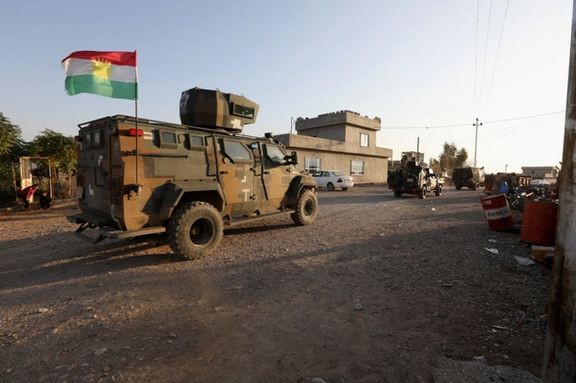
Iraqi security forces deployed in the northern city of Kirkuk on Sunday as Iran-backed militias have killed several Kurds and continue to threaten more attacks.
According to police and security sources, four Kurds were shot dead and 15 people were wounded during the clashes in the city, controlled by the Iraqi government and home to diverse groups of people including Kurds, Turkmens, and Arabs.
Amir Shwani, a spokesman for Kirkuk police, said in a statement that a curfew had been lifted and vehicles were moving normally in the city on Sunday, but security forces had deployed additional troops to "prevent violence and protect civilians."
The city has been a point of contention, witnessing disputes between Kurdish forces and the Iraqi government. Iranian-backed militias have recently escalated aggression in the region, firing rockets to target gas fields on the road to Sulaymaniyah, a large city in the Kurdistan autonomous region about 100 kilometers west of Kirkuk.

The clashes followed days of tensions over a building in Kirkuk that was once the headquarters for the Kurdistan Democratic Party (KDP) but was used by the Iraqi army as a base since 2017. Iraq's federal supreme court issued an urgent ruling on Sunday obliging the government to delay procedures regarding the handover of the building to the KDP.
Kirkuk, an oil-rich province in northern Iraq along the fault lines between the Kurdish autonomous region and areas controlled by Iraq's Shiite-dominated central government, has been the focus of some of the country's worst post-Islamic State violence. Arab residents and minority groups, who say they suffered under Kurdish rule, have protested the KDP's return to the city.
“Dozens of protesters, mainly members of the Iran-backed Asaib Ahl al-Haq militia and their supporters, have set up tents near the JOC headquarters since Sunday evening in protest to the potential return of the KDP. They have blocked access to the highway and vowed to continue their demonstration until [Prime Minister Shia al-Sudani retracts his decision,” Rudaw Kurdish news agency reported reported.
Similar clashes are also happening between Kurdish-led forces and groups of Islamic militias and tribes in eastern Syria. The violence has killed 49 fighters from both sides and eight civilians, according to the Syrian Observatory for Human Rights war monitor.
The involvement of the pro-Iran militias also has another dimension. Late in August, Iran and Iraq formalized an agreement to dismantle Iranian Kurdish dissident factions stationed in the northern reaches of Iraq and relocate them from their bases.
Nasser Kanaani, spokesperson for Iran's Foreign Ministry, said the Iraqi government had undertaken the commitment "to disarm the armed terrorist groups stationed in Iraq's territory by September 19, and subsequently, evacuate and transfer them from their military bases to camps designated by the Iraqi government."
Historically, Iran has intermittently executed targeted operations against the Kurdistan Democratic Party in Iran (KDPI) and other Iranian Kurdish dissident elements operating within Iraq's semi-autonomous Kurdish region, adjacent to Iran's borders.
Various Iranian dissident factions in Iraq have aligned their allegiances with the two principal Iraqi Kurdish parties: the Kurdistan Democratic Party, headquartered in Erbil, and the Patriotic Union of Kurdistan party, with its stronghold in Suleimaniyah.
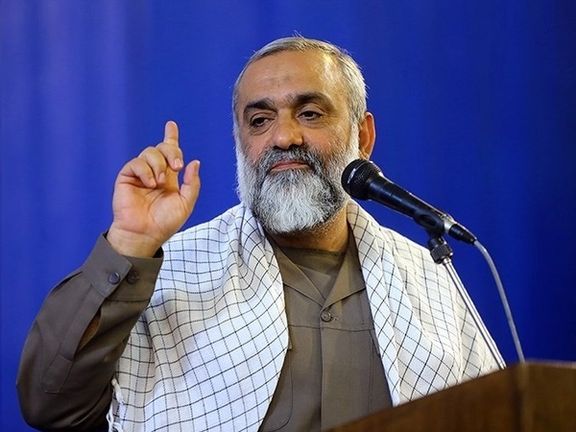
A senior Revolutionary Guard commander has said that the main message of the Arbaeen pilgrimage to Iraq is defending hijab and the Supreme Leader.
Gen. Mohammad-Reza Naghdi, the coordinating deputy to IRGC commander Hossein Salami, made the remarks during an event about the Arbaeen Shiite ceremony that the Islamic Republic regime views the event as a show of influence in the region.
Naghdi said promoting the pilgrimage on media is in line with the regime’s efforts to emphasize on the principles of Velayat-e Faghih – another term for the rule of the Supreme Leader – and observance of hijab.
The uprising last September has made it increasingly difficult for the clerical regime to enforce the mandatory Islamic dress code, and has damaged the legitimacy of Supreme Leader Ali Khamenei.
The rule of Islamic jurist gives a cleric such as Ali Khamenei extraordinary powers including the power to overrule all elected bodies and officials and hence, people’s choice. As a system of governance, Velayat-e Faqih has underpinned the way the Iranian regime has operated since the country’s 1979 Islamic Revolution. At its most basic, the theory -- advocated by some Shiite thinkers -- justifies the rule of the clergy over the state.
Despite numerous incentives to encourage the pilgrimage, including providing free medical services and rest stops along the way, free internet on the road and inside Iraq, offering interest-free loans and granting 200,000 Iraqi dinars ($153) to pilgrims, the number of Iranians willing to undertake the Arbaeen Shiite pilgrimage is in decline.
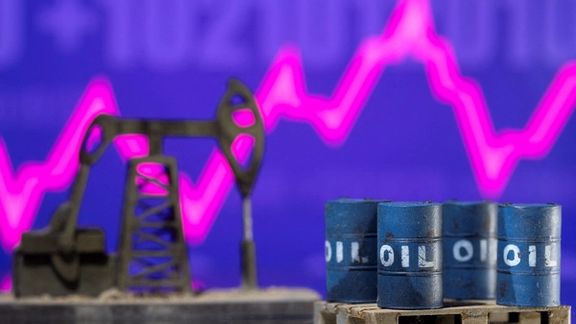
Some media outlets in Iran are discussing apparent contradictions between estimated volume of oil exports and the income the government has secured.
Foreign sources monitoring Iran’s oil shipments estimated in August that daily exports reached close to two million barrels per day, after climbing to one million in 2022 and 1.5 million earlier this year. A Reuters survey published August 31 showed that OPEC’s oil output rose in August as Iranian supply jumped to its highest since 2018, despite ongoing cuts by Saudi Arabia and other members of the wider OPEC+ alliance to support the market.
However, the head of Iran’s Planning and Budget Organization, Davoud Manzoor, said in late August that only half of the government’s projected income form oil exports has materialized since the beginning of the current Iranian calendar year on March 22. He also claimed that the oil was sold at around $60 per barrel.
Given the fact that in this period the government was expecting to earn around $13 billion from oil exports, the Fararu website in Tehran argued that Manzoor’s statement means the government earned only $6.5 billion.
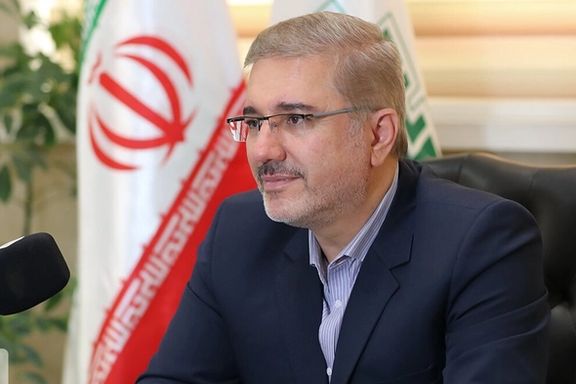
Apart from uncertainty about the real volume of Iran’s oil exports, another puzzle preoccupies the media. How much discount Iran provides to buyers of its oil. Perhaps that discount should explain why the government has earned only half of the expected oil revenues.
If an average daily 1.5 million barrels of oil was sold since March at $60 a barrel, the government should have earned $13.5 billion, EcoIran and Fararu websites point out. Therefore, either the volume of exports was lower, or the Islamic Republic offered deeper discounts amid US sanctions on its oil exports and banking transactions.
This leads to the belief that Iran is offering its oil at closer to $30 a barrel, while Russia, which is also under sanctions, sells its crude at around $60, and Tehran must compete with its ally to attract Chinese buyers.
The $30 price estimate comes from an average daily export of 1.5 million barrels, that industry sources have been reporting in recent months. At that price, Iran could earn $6.75 billion in five months since March, which is close to what Manzoor, the head of the Budget organization announced as government oil revenues in this period.
There is also the possibility that China pays more for the oil on paper, but actually remits much less in cash and the rest in barter. There are also middlemen who facilitate the illicit oil shipments and launder the payments for Iran amid banking sanctions. These activities could also take a big chunk out of the revenues.
Tankers carrying Iranian oil usually engage in ship-to-ship transfers in Asian waters to hide the origin of the shipments before it reaches China.
A substantial part of these hard currencies is sold at a subsidized rate to importers of essential goods, such as food and animal feed. While one US dollar fetches 500,000 rials on the open market, the government provides the hard currency at 285,000 rials for imports of food and medicine.
Since the United States exited the JCPOA nuclear accord and imposed the sanctions in 2018, Iran has been selling its oil in clandestine methods to China. Export volumes and prices are a state secret, and all figures are estimates by industry observers and occasional bits and pieces of information from government officials.

The Iranian regime has imposed severe sentences on protesters detained during nationwide rallies and several others who gathered at the grave of a deceased protester.
In Arak, the judiciary sentenced eight people to approximately seven years in prison and over 70 lashes each on charges of "insulting sanctities, disrupting public order, and promoting propaganda against the system" for their presence at the gravesite of Mehrshad Shahidinejad during a religious holiday.
These individuals were arrested while gathering at Shahidinejad's grave on Tasu'a, a Shiite holiday that precedes the death anniversary of Hussein ibn Ali, the third Shiite imam and the grandson of the Islamic prophet Muhammad. Regime agents released a video clip of the gathering and portrayed it as disrespectful to the Shiite ritual.
In line with the regime's strategy to intimidate and humiliate protesters, the judge emphasized that "the flogging sentences for these individuals must be carried out publicly, following Friday prayers at Arak's main prayer site."
Mehrshad Shahidinejad, a 20-year-old chef, was arrested in October during anti-government rallies and died after being beaten with a baton at the Revolutionary Guard Intelligence's detention center in the city. He soon became an icon of the Women, Life, Freedom protests.
In another case, six protesters arrested in Tabriz were collectively sentenced to 18 years in prison and various fines. Pejman Eslami and Bagher Taji Ahmadifard each received five-year sentences, while the remaining four were sentenced to two years in prison and fines totaling around $11,000. The average Iranian's monthly salary is approximately $150 to $200.
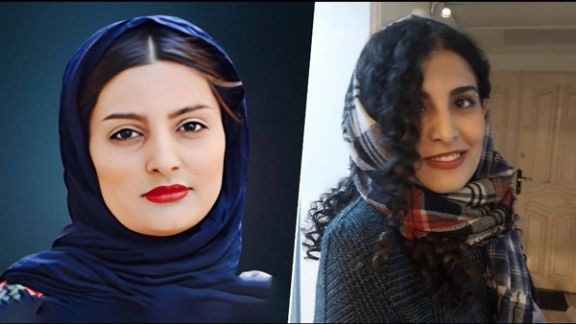
Amid intensified pressure on Iranian journalists, the regime has handed down a suspended three-year prison sentence to two more reporters.
Negin Bagheri and Elanaz Mohammadi were charged with "assembly and collusion" by a revolutionary court in Tehran.
Amir Raeesian, Mohammadi's attorney, confirmed the sentence on Saturday, explaining that the two journalists will serve a fraction of their sentence, and the remainder will be suspended for five years.
According to Raisian, the two were cleared of charges related to collaboration with hostile foreign entities. The court cited a lack of evidence and grounds for the charges, ultimately leading to their acquittal.
The reporters have also been subjected to a five-year "travel ban" and are prohibited from engaging in "professional activities related to the committed crime" or having interactions with individuals active in foreign media outlets.
Elnaz Mohammadi, a reporter for the reformist Ham-Mihan newspaper, is the sister of Elaheh Mohammadi, a journalist who was among the first to report Mahsa Amini's death in custody in September 2022. She was arrested and jailed alongside Niloufar Hamedi. The pair have been detained for 300 days because the regime held them responsible for the nationwide protests that erupted after Amini’s death.
Elnaz was detained in February but was released on bail about a week later. Bagheri, a journalist and women's rights activist, was also released on bail after being summoned, charged, and temporarily detained in February.
Mahsa Amini's death sparked nationwide protests that led to the Women, Life, Freedom movement, the boldest challenge the Islamic Republic has faced since its establishment.
In August, the chairman of the board of directors of the Tehran Journalists' Guild stated that more than one hundred reporters and journalists have been arrested following the protests, emphasizing that the "dark era of journalism" in Iran continues."






